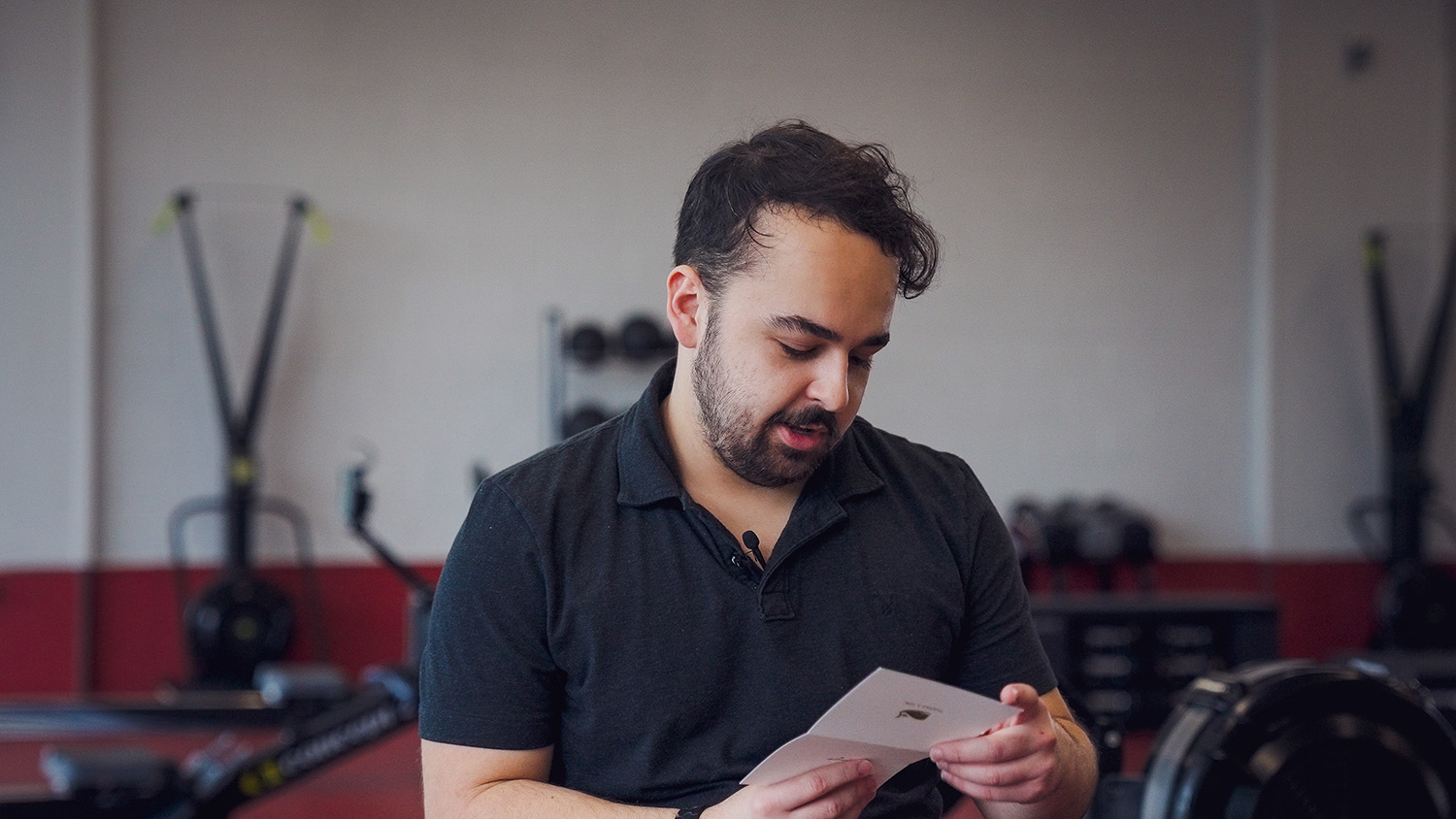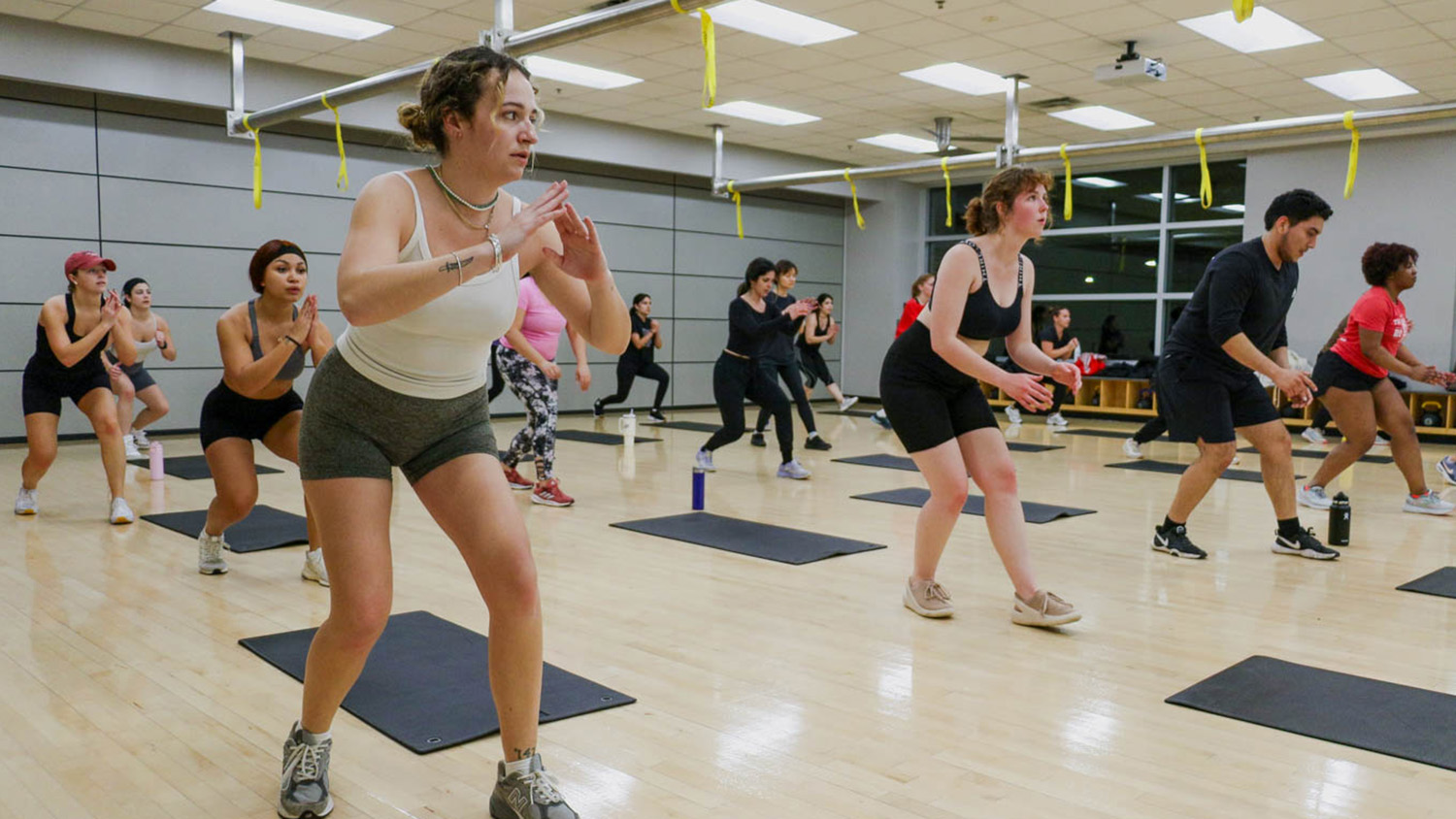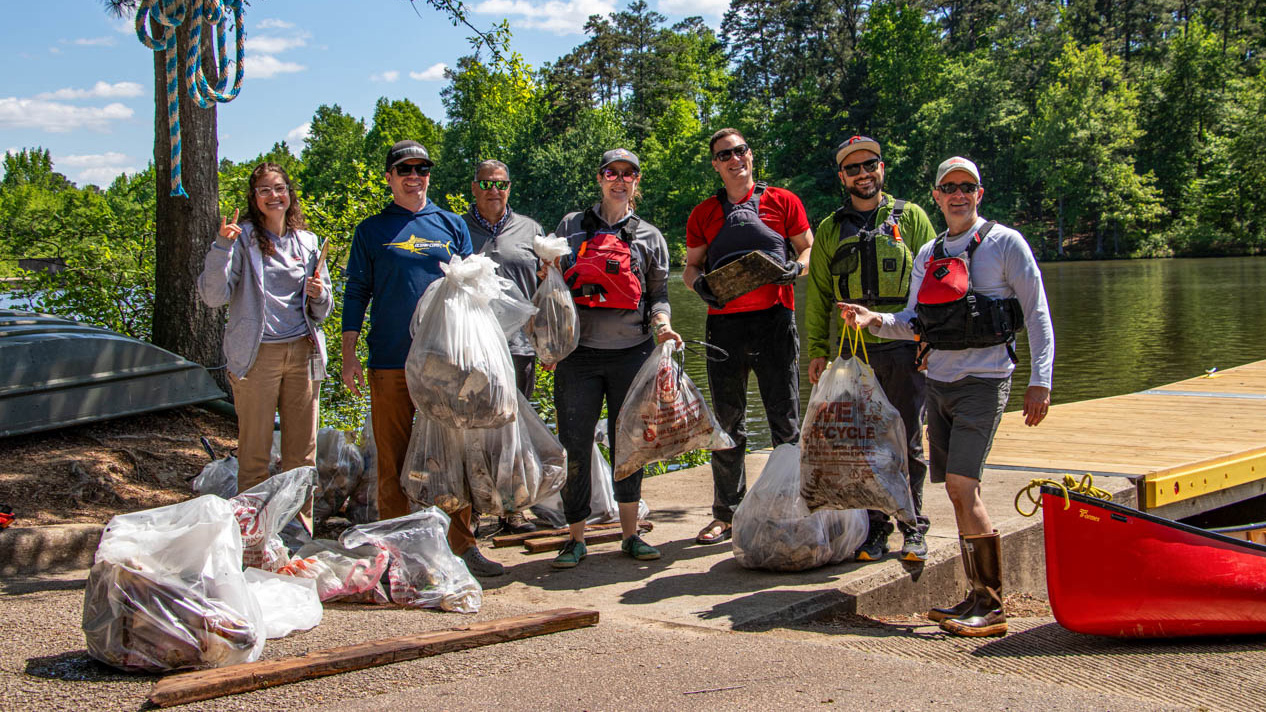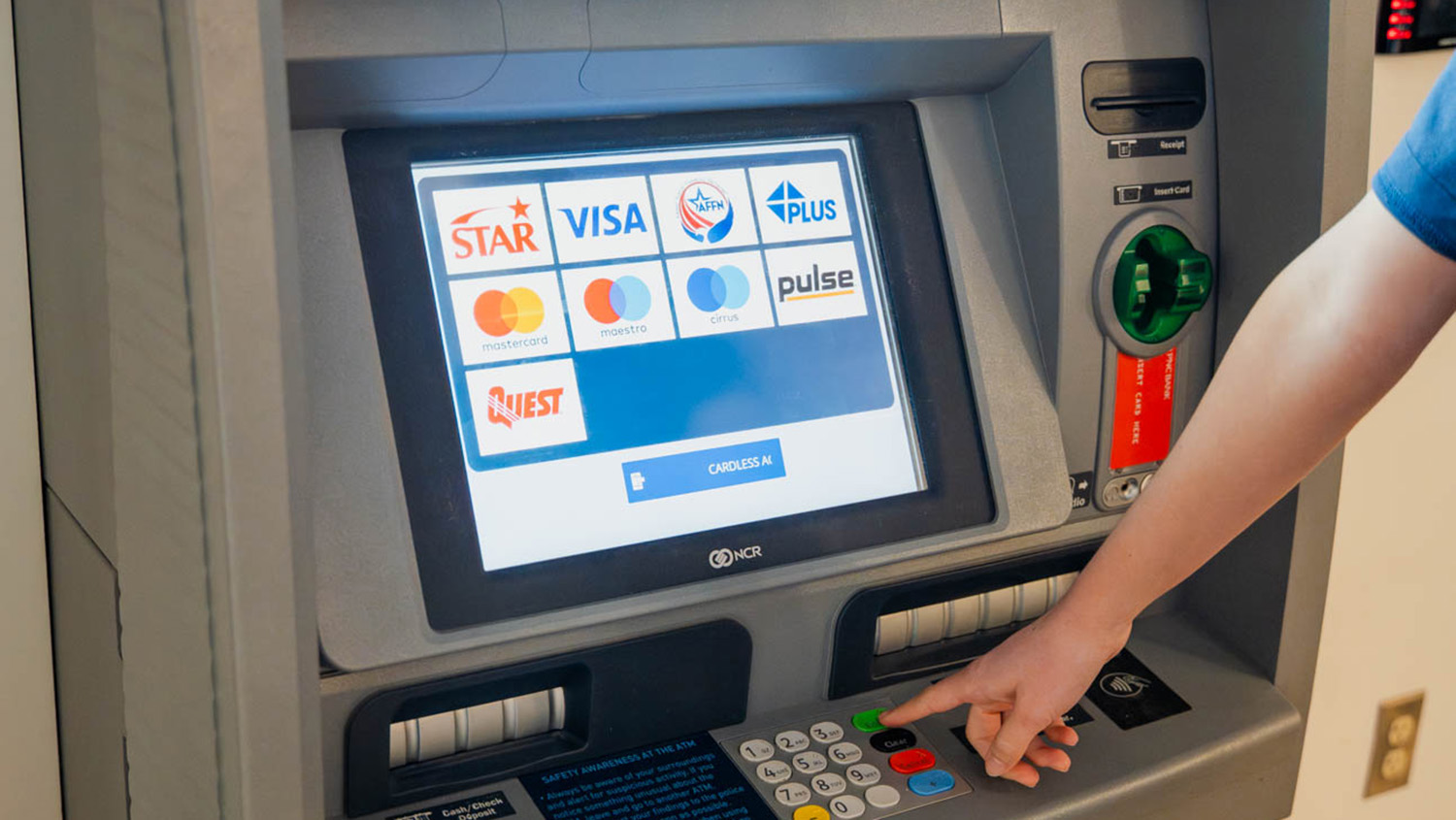How to Save a Life
This spring, a group of Wellness and Recreation student employees used their training to save the life of a patron who went into cardiac arrest.

Saturday, April 27, 2024, started like any other day at NC State’s Wellness and Recreation Center, with students, faculty, staff and guests shuffling in and out for their workouts of choice.
In an instant, it turned into anything but a typical day and became a foundational moment in the lives of a Wellness and Recreation patron, his loved ones and a group of student employees who saved a life.
In a fourth-floor room containing several rowing machines, free weights, benches and mats, the guest of an NC State staff member stood up from his rowing machine, lost consciousness and went into cardiac arrest. Suddenly, the emergency response training that every Wellness and Recreation student employee receives became a real-life scenario of life and death.
The student employees on duty sprang into action, performing life-saving measures until emergency medical service (EMS) workers arrived.

“We always hope that something like a cardiac event doesn’t happen in our facility, but obviously we are prepared and trained for that,” said Eric Hawkes, Wellness and Recreation’s executive director. “And in this specific situation, our student employees were absolutely amazing. All of them were rock stars. They saved our colleague’s life. To say I’m proud is an understatement.”
Life-Saving Training
Among the student workers immediately on the scene was Ignacio Leon, a fourth-year student studying applied mathematics. Leon was the primary responder and started cardiopulmonary resuscitation (CPR) on the patron, along with supervising the administering of an automated external defibrillator (AED).
In a tense, stressful moment, Leon and his fellow students allowed the training they received from Wellness and Recreation for precisely a situation like this to rule the day.
“It’s such a new, stark experience that there is a certain panic that settled in,” Leon said. “But at the same time, I had to just focus back and call back on the training, make sure I’m thinking through it.”
That training Leon is referring to is one that every new Wellness and Recreation student employee receives upon hiring and typically at the start of a new semester.

Emmanuel Akogyeram, Wellness and Recreation’s assistant director of facility operations explained that this training includes an American Red Cross First Aid/CPR/AED certification taught by Wellness and Recreation staff.
“Here within Wellness and Recreation, the activities users come to us to engage in inherently expose them to risk,” Akogyeram said. “And inherently people do get ill and sick. It’s important and a best practice for our students and employees, for a facility like this, to have the necessary training and skills in case these emergencies happen to respond appropriately.”
I think we had clear communication.
The training also involves reviewing the department’s Emergency Action Plan (EAP). The EAP directs Wellness and Recreation staff to take appropriate action during emergency incidents and facilitates a coordinated response for all emergencies.
“I think we had clear communication around the patron, and in that room, based on what was going on,” said Angelina Vasselli, who graduated last semester after studying biomedical engineering. “It was very clear that we needed to get an AED, that we needed to start cutting the shirt and putting patches on. It was just very fluid. I think except for the fact that we were doing this for the first time, the communication was very good, and we kept it professional.”
Mileah Goddette, a third-year student studying biological sciences, said that those clear communication processes and definitions of roles proved critical in allowing the student team to take the necessary life-saving measures.
“My main role was to make sure that not only my team, but everyone in the situation, stayed calm,” Goddette said.. “So I just made sure that everybody knew their roles and positions, and, specifically, I administered chest compressions and the AED based on what it was telling me.”

Akogyeram vividly remembers the day, he had just gone for a run and gotten out of the shower to find a deluge of messages on his phone from Kaylyn Poole, a Wellness and Recreation student program assistant, about what had occurred.
The students on his team had saved a life.
“In my career so far, I don’t think I have been as proud about any encounters or any experiences as the kind of pride I felt in my students for being able to stay composed, stay calm and then rely on these skills and abilities to literally save someone’s life,” Akogyeram said. “It’s hands down the proudest moment of my career so far.”
Moving Forward
Because of those students’ implementation of their training, the Wellness and Recreation patron who experienced the cardiac episode is alive and with his family and friends today.
Being involved in a life-saving event naturally changes a person’s outlook and perspective, and it certainly has for all of the students involved that day.
“I trust myself more to be able to act because I’ve done it before,” Vasselli said. “I haven’t acted in doing CPR, but because I’ve had exposure to it in a very real, very emergent situation, I think I could trust myself to be able to do it the next time. We also checked in on each other as we were going through the situation when we were able to step back for a second, and asked each if we were okay. I think one thing I took away from this is that it’s okay to feel the situation and the importance of it, you’re allowed to feel those things in the moment without letting them compromise your care to the patron.”
Going forward, Wellness and Recreation leaders will have a concrete example to show students the importance of the training they’re receiving.
You never have that full understanding of how vital it is until you experience something like that.
All of the students involved said they would stress to future generations of Wellness and Recreation employees to really take in and focus on the training they receive, after seeing its importance first hand.
“You never have that full understanding of how vital it is until you experience something like that. You know that lives are at stake, but you don’t fully understand it. When you see the person there, it just changes your perspective.”
All of the student workers got to feel the gratitude of the life they saved as well.
The patron sent handwritten thank you notes to each student involved, thanking them for their actions that day that allowed his life to continue.
“It means the world to me,” Godette said. “Health, safety and well-being is something that is so important to me. As someone who’s one of four siblings and one of six primary family members, I don’t know what I would have done if it had been me on the other side. At the end of the day, he might be somebody’s father. He’s somebody’s husband. My priority was making sure that he got to see another day. I’m grateful that I had the training I did from Wellness and Recreation, because if I didn’t, I don’t know if he would still be here.”
My priority was making sure that he got to see another day.
Ultimately, those crisis management and emergency response abilities are part of the life-long skill set that Wellness and Recreation leaders hope their student employees take into their post-graduate lives.
“We put a lot of energy and intentional thought into how those transferable skills will actually help them no matter what they’re going to do,” Hawkes said. “Some of my favorite stories are when they come back and they reflect on their experience here and how that has prepared them to be successful in the real world, no matter what degree they received.”
- Categories:


